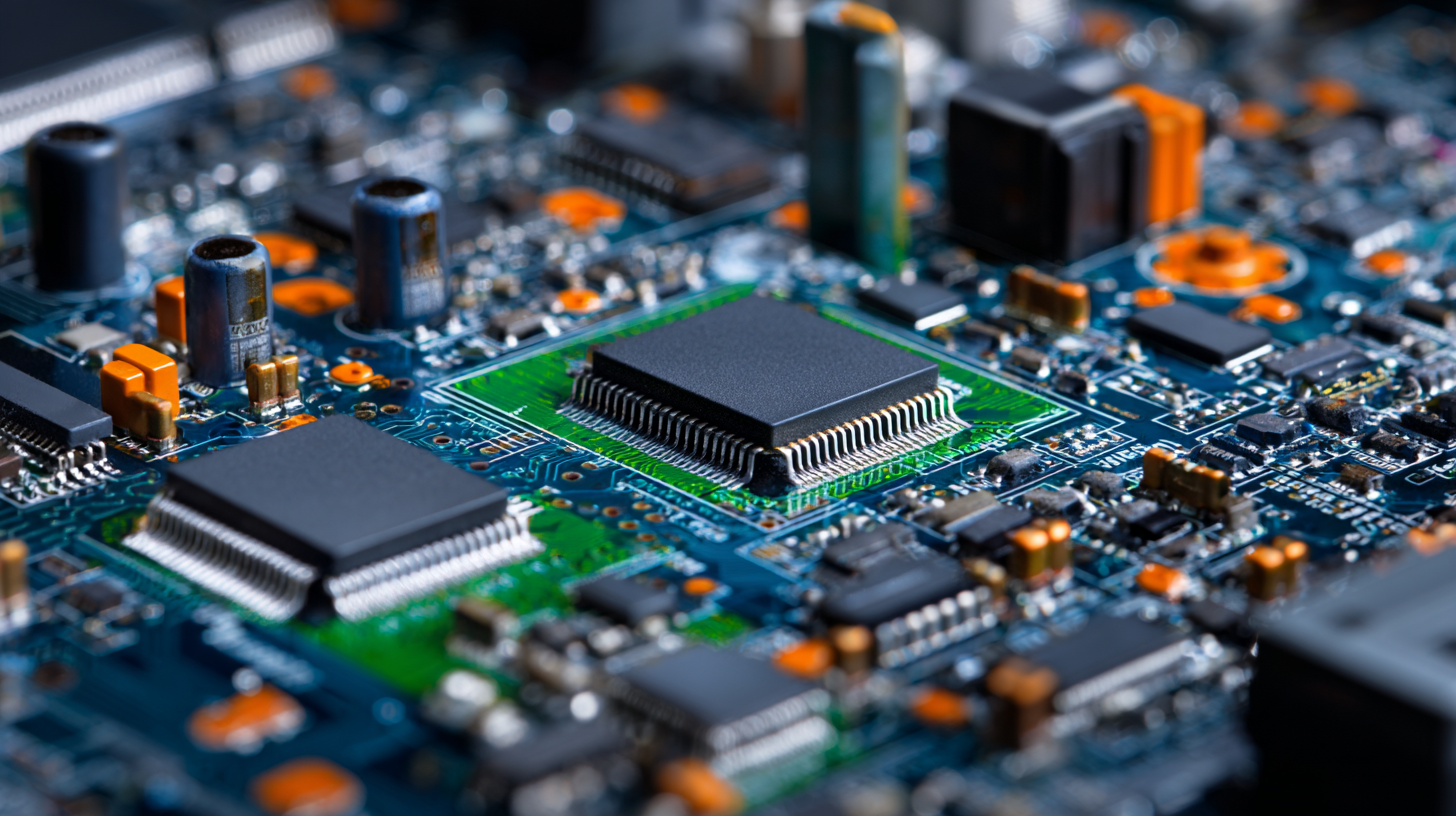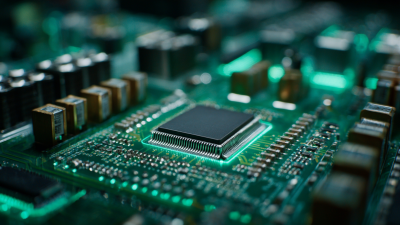Revolutionizing Circuit Board Manufacturing: Innovative Techniques for Efficient Production
The landscape of circuit board manufacturing is undergoing a profound transformation driven by innovative techniques aimed at enhancing production efficiency. According to a recent report by industry research firm Grand View Research, the global printed circuit board (PCB) market size is expected to reach USD 83.5 billion by 2027, growing at a compound annual growth rate (CAGR) of 4.4% from 2020 to 2027. This surge underscores the pressing need for manufacturers to adopt cutting-edge technologies to meet rising demand and improve competitive advantage.

Advanced manufacturing processes, such as additive manufacturing and automation, are not just trends; they are essential strategies reshaping the operational landscape. These techniques are proving vital in reducing production times, minimizing waste, and enhancing design flexibility, ultimately leading to significant cost savings. In this context, exploring innovative approaches to circuit board manufacturing is crucial for businesses aiming to thrive in an increasingly competitive market.
Understanding the Basics of Circuit Board Manufacturing Techniques
The manufacturing of circuit boards is pivotal to the electronics industry, with global demand projected to reach $100 billion by 2025, according to a report by Research and Markets. Understanding the fundamentals of circuit board manufacturing techniques is essential for both new entrants and seasoned professionals. The process begins with design, where advanced software tools like CAD enable engineers to create intricate layouts that include not only wiring but also component placement for optimal performance.

Once the design is finalized, materials such as FR-4 laminate are prepared, which offer a balance of durability and electrical insulation. The manufacturing process typically involves methods such as etching, plating, and solder mask application. Notably, advanced techniques such as laser drilling and automated optical inspection (AOI) have significantly reduced errors and improved efficiency. According to IPC (Association Connecting Electronics Industries), companies that implement these innovative technologies have reported production cycle times reduced by up to 40%. This efficiency gains underscore the importance of modern techniques in maintaining competitiveness in a rapidly evolving market.
Adopting Automation to Streamline Production Processes
The advent of automation in circuit board manufacturing has significantly transformed production processes, making them more efficient and cost-effective. By integrating advanced robotic systems and AI algorithms, manufacturers can streamline various stages of production, from soldering to packaging. These automated systems not only enhance precision but also reduce the risk of human error, leading to a consistent quality of output. For example, automated pick-and-place machines can quickly and accurately position components on circuit boards, greatly speeding up the assembly process.
Moreover, automation allows for real-time monitoring and adjustments during production, helping to maintain optimal conditions and address any issues immediately. This leads to reduced waste and improved resource utilization, which is crucial in today’s competitive market. By adopting smart manufacturing technologies, companies can analyze production data to identify bottlenecks and implement solutions proactively. Overall, the shift towards automation in circuit board manufacturing not only boosts productivity but also paves the way for innovations that can accommodate the growing demands for complex electronic devices.
Integrating Advanced Materials for Enhanced Performance and Durability
The integration of advanced materials in circuit board manufacturing is a game-changer, enhancing both performance and durability. Materials such as polyimide and thermoset resins have emerged as preferred choices, offering superior thermal stability and flexibility. These materials not only withstand extreme temperatures but also contribute to the lightweight profile of circuit boards, crucial for applications in aerospace, automotive, and consumer electronics, where efficiency is paramount.
Furthermore, the incorporation of nanotechnology in manufacturing processes is revolutionizing the chemical composition of circuit boards. Nano-coatings can provide improved electrical conductivity and lower dielectric loss, significantly boosting the overall performance. The use of advanced composites enhances the mechanical strength of circuit boards, ensuring they can endure harsh environmental conditions without compromising functionality. As manufacturers embrace these innovative materials, the industry is poised for a new era of efficient production, marked by heightened performance metrics and increased longevity of electronic components.
Innovative Techniques in Circuit Board Manufacturing
This bar chart illustrates the efficiency improvements in circuit board manufacturing techniques over the last few years. The data emphasizes the impact of integrating advanced materials on performance and durability.
Implementing Sustainable Practices in Circuit Board Manufacturing
The implementation of sustainable practices in circuit board manufacturing is becoming increasingly crucial as the industry faces environmental challenges. By integrating eco-friendly processes, manufacturers can significantly reduce waste and energy consumption, subsequently lowering their carbon footprint. This evolution aligns with global initiatives aimed at sustainability, pushing companies to adopt greener technologies that enhance efficiency while preserving natural resources.
Governments and organizations worldwide are recognizing the importance of transitioning to a low-carbon economy. For instance, various regional plans are being developed to promote green manufacturing systems, encouraging industries to innovate and refine their production methods. The circuit board sector can draw inspiration from successful practices in other fields, such as the recycling of materials and the commitment to reducing environmental impact throughout the production lifecycle. This paradigm shift not only benefits the planet but also positions companies for long-term economic viability in a market that increasingly prioritizes sustainability.
Revolutionizing Circuit Board Manufacturing: Innovative Techniques for Efficient Production - Implementing Sustainable Practices in Circuit Board Manufacturing
| Technique | Description | Efficiency Improvement (%) | Sustainability Impact |
|---|---|---|---|
| Additive Manufacturing | 3D printing technology for rapid prototyping and production. | 30 | Reduces material waste significantly. |
| Laser Cutting | Precision cutting of circuit board layers with minimal waste. | 25 | Enhances energy efficiency during manufacturing. |
| Green Materials | Using eco-friendly substrates and inks. | 20 | Lowers environmental impact of production. |
| Automated Assembly | Utilization of robotics for assembly processes. | 40 | Reduces labor costs and manufacturing time. |
| IoT Integration | Smart sensors for real-time monitoring and quality control. | 35 | Improves product quality and sustainability tracking. |
Leveraging Smart Technology for Real-Time Monitoring and Quality Control
The circuit board manufacturing industry is undergoing a significant transformation with the integration of smart technology, particularly in the realms of real-time monitoring and quality control. According to a recent industry report by MarketsandMarkets, the implementation of IoT devices within manufacturing processes is predicted to boost efficiency by up to 30% by 2025. These smart technologies allow for continuous data collection throughout the production cycle, enabling manufacturers to promptly detect anomalies and mitigate potential issues before they escalate.

One effective tip for companies looking to harness smart technology is to invest in advanced analytics tools that can process real-time data. This ensures that quality control measures are not only reactive but also proactive, identifying patterns that may indicate future defects. Additionally, utilizing automated inspection systems can enhance precision, leading to greater consistency in product quality. Research from McKinsey indicates that organizations incorporating automation into their quality checks see a 20% reduction in rework and scrap.
Moreover, manufacturers should not overlook the importance of training staff to interpret the data generated by these smart systems. Empowering employees with the right skills can lead to more informed decision-making, ultimately enhancing manufacturing efficiency. Implementing a continuous feedback loop, where insights gained from monitoring influence both production and quality strategies, can drive innovation in circuit board manufacturing.
Related Posts
-

Unlocking Innovation: The Future of Circuit Board Design in 2024 and Beyond
-

Understanding the Latest Innovations in PCB Manufacturing for Modern Electronics
-

Unlocking the Future of Circuit Board Production with Sustainable Practices and Advanced Technologies
-

Understanding the Importance of Flexible Printed Circuits in Modern Electronics
